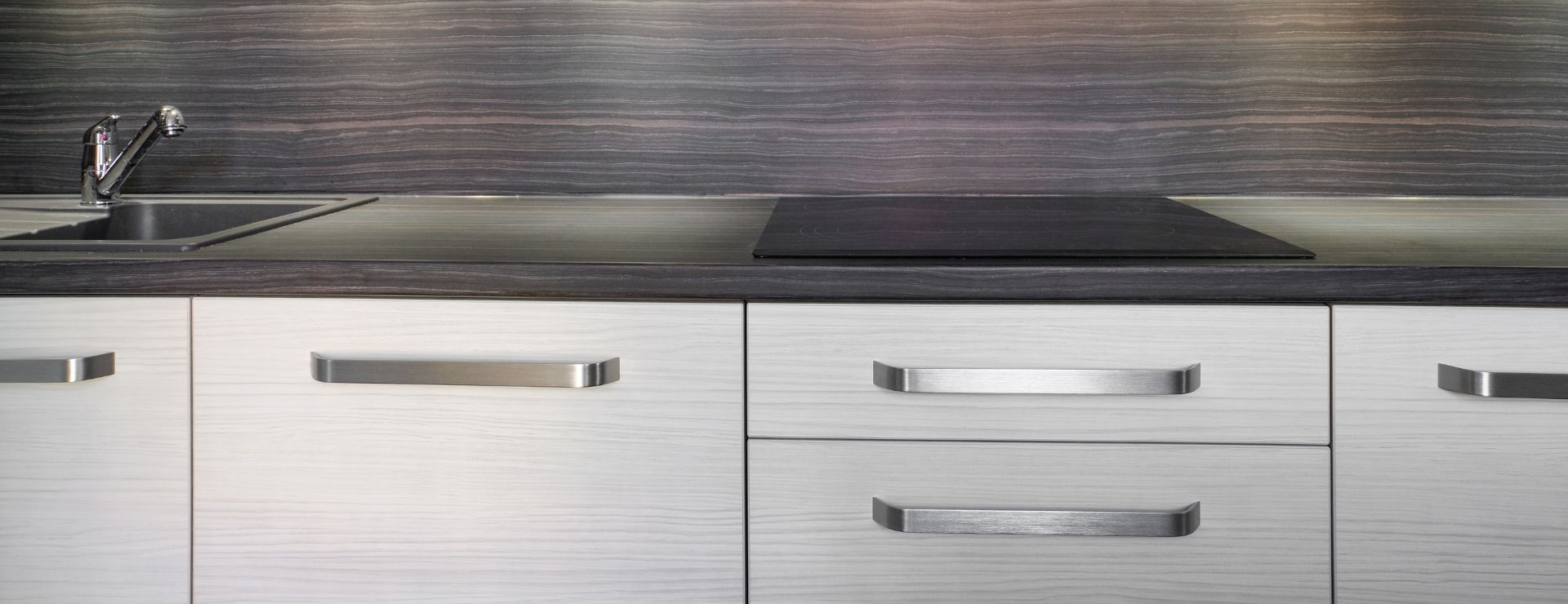Are you looking to replace your entire kitchen or simply want to replace your rigid kitchen units? It is possible and can be done quite easily with little trouble. With various options available and even the opportunity to experiment with your kitchen layout, you don’t have to break the bank that a full refit would cost. No matter how big or small your kitchen project is, find out how to replace kitchen cabinets yourself below.
Many kitchens feature units that have seen better days. Perhaps they were installed many years ago and while they remain functional, simply don’t look fashionable anymore. There are also much older units which have seen better after many years of use. If you don’t have the budget for a whole new kitchen, buying replacement kitchen units will give your kitchen a fresh new look.
Before you remove your units
If you’re removing every unit in your kitchen, it’s important to shut off/clear a space around your gas, water and electrical fixtures and mark them to avoid damaging them during the refurbishment. Removing fixtures before shutting these off might cause leaks or damage to the property. Your safety should also come first as well.
Most electrical connections to appliances are usually just plugged into a wall socket, allowing you to easily unplug them. However, there are some appliances which are hard wired into fixed connections and require a qualified person to unplug. All gas appliances and supplies must be disconnected or moved by qualified professionals.
Before you move items around your kitchen, you should have a plan for how your layout will be.
Remember to wear protective equipment to give your eyes, nose, hands and mouth when required to. You should also wear clothes you don’t mind getting dirty.
Removing kitchen cupboard doors and drawers
The easiest place to start when removing your units is to remove the kitchen doors and drawers.
Before unscrewing the hinges on the doors, make sure there isn’t a release clip which will allow you to move on. If there isn’t a release clip, unscrew the hinges, with someone holding the weight of the door, so you both have a hand free during removal.
Drawers can be lifted off their runners – although they can sometimes have a securing clip that needs to be undone before it lifts out.
Removing kitchen cabinet carcasses
When removing your existing kitchen base units, there should be just simple fixings on the back of the cabinet to keep them in place with some screws holding adjacent cabinets together. Once all fixings have been removed, you should be able to pull the base kitchen units out easily.
Wall units on the other hand are a bit trickier, as these have been built to take the full weight of a cabinet and everything inside it. All contents should be removed from the unit, including shelves, before removing them. Carefully loosen all screws on the brackets on both sides and removing screws that connect cabinets in the middle. With the help of someone else, lift the unit up and out of the bracket. If it’s screwed directly into the wall, your friend should hold the weight of the kitchen cabinet while you unscrew all anchor points.
Replacing kitchen units and cabinets
You should make a space so you can assemble your kitchen cabinets. Some units can be heavy, so get help from someone else when lifting them. Cover the working area with the cardboard packaging to protect your new units from scratches and damage. Keep all hinges and coloured blanks in a box for later.
Assembling your first unit can be time consuming, but after building one you should get faster at building the others.
If you have an “L” or “U” shaped kitchen, you should start fitting the units from the corner so you work out in both directions.
Before fixing your kitchen units, you should place the first base unit levelled up and in position then mark the wall with a vertical line from its edge so you have a guideline for the wall units so they all line up with the base units.
Wall units typically come with two fixing brackets each. When the wall unit has been assembled, measure where the fixing brackets need to be for it to hook on. Transfer your measurements to your wall and fix the brackets securely. Make sure you use your good quality fixings and, in the case of plasterboard, use cavity fixings where the brackets don’t land on a wall stud.
Mount your wall units while checking them with a spirit level to ensure the edges are flush as you go along. They are adjustable via two screws inside either top corner of the wall unit, one screw raises or lowers the unit while the other pulls the unit tight against the fixing bracket and locks in place.
Start installing your base units from the corner and keep them level. Then fix your units to the wall until they are in position and ensure they are level.
For more information on how to fit a new kitchen, be sure to check out our guide here.
Fitting your replacement doors and drawers
If you’re happy with your units, you can fit your kitchen unit doors and drawers. Drawers are usually easy to assemble by following the instructions. Doors should be attached one at a time to the unit. Hinges are usually in two parts, one for the unit and one for the door. Fit the kitchen doors hinge first, so they can accept the door. Now fit the other parts of the door.
The handles for your doors and drawers may require two fixing holes being drilled. There are dimple marks on the reverse of doors, which show where to drill holes. These holes should be drilled as straight as possible and with the correct size drill bit to match the fixing screws for the kitchen door handles.
When fitting the kitchen cupboard doors, make sure both parts of the hinge mate together correctly otherwise, it will be difficult to adjust the door. When you look at the hinge, the screw at the back holds the door in place while the other enables you to move the door later for alignment. Once all the doors are fitted, they can be adjusted so all gaps between them are even and all doors are level.
If you’re planning to update your kitchen, get made-to-measure kitchen units from Kitchen Door Hub online today. Choose from various styles including handless, shaker style, slab style, high gloss or woodgrain finishes, to completely transform your kitchen.



